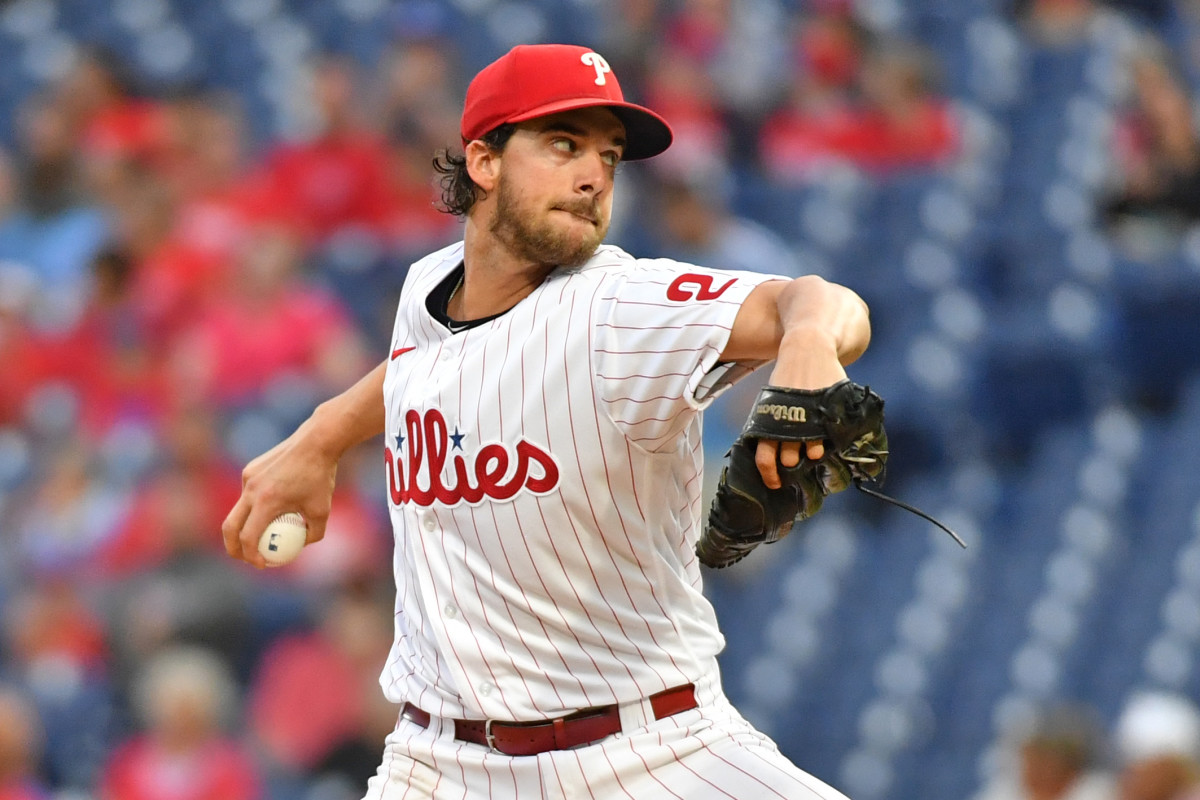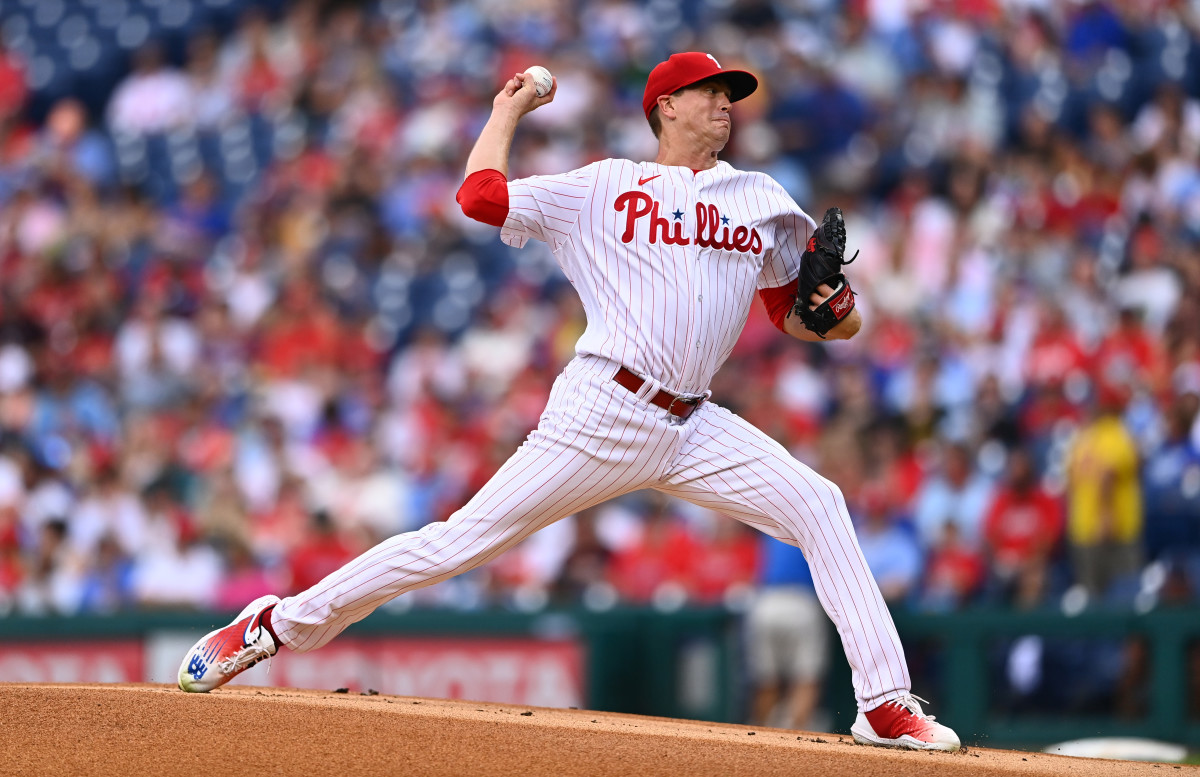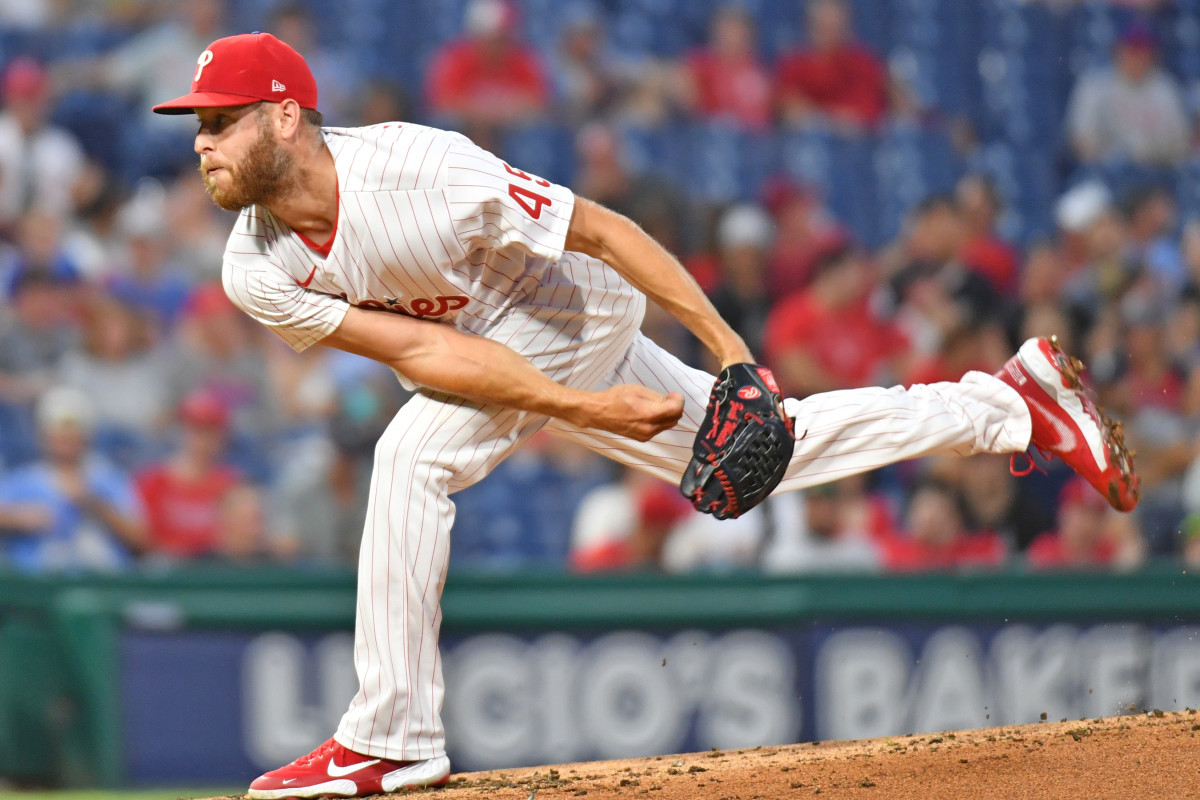Why Don't the Philadelphia Phillies Throw More Sliders?

In recent years, the slider has become the most talked-about pitch in baseball. Pitchers are throwing it more and more, and hitters are struggling to keep up.
Tom Verducci wrote about this phenomenon for Sports Illustrated back in July.
Batters are hitting just .209 against the slider, the lowest mark against any of the five pitches thrown at least 2% of the time. Pitchers and their coaches are following the data. For the first time in recorded history, fastballs (not including cutters) are being thrown less than half the time. Since 2015, which marked the start of the Statcast Era, fastball use has declined from 57% to 48%. Almost all that decline can be accounted for by an increase in sliders.
Slider usage has gone up in each of the past eight seasons. In 2022, the slider has accounted for just under 22% of all pitches thrown (per Baseball Info Solutions).
The Philadelphia Phillies, however, have used that particular pitch just 16.2% of the time this year. Only the Arizona Diamondbacks have thrown fewer sliders.
To make things all the more confusing, Phillies pitchers are actually pretty good at throwing sliders. They have the fastest sliders in the league this season, averaging 86.2 MPH. While speed isn't as consequential for sliders as it is for, say, fastballs, an 86-MPH slider is a nasty pitch.
Only 11 teams in baseball are averaging over 85 MPH on their sliders. Only two are averaging more than 86 MPH. Research has shown that almost all sliders faster than 85 MPH are effective pitches, regardless of shape/movement.
According to the Pitch Value metric on FanGraphs, Philadelphia ranks 16th in baseball in total value generated with their sliders, even though they rank 29th in rate of sliders thrown.
In other words, the problem isn't that the Phillies are bad at throwing sliders. Something else is going on.
Well, more accurately, three things are going on:
- Aaron Nola is pitching a lot.
- The starting rotation is pitching a lot.
- Zack Wheeler and Bailey Falter are confusing.
Let's take a closer look.
Aaron Nola

Aaron Nola has pitched more than any other Philadelphia starter this season. He is third in the Majors in innings pitched and sixth in total batters faced. His 2653 pitches account for more than 13% of all pitches the Phillies have thrown.
Of all those pitches, there have been fastballs and curveballs and changeups, but there has never been a slider. Nola doesn't throw a slider. He never has.
In this day and age, that's unusual. Of the 111 starting pitchers with at least 100 IP this season, only 16 have never thrown a slider.
By not throwing a slider, Nola is bringing down the team's slider rate. It's a pretty simple fact. When the hardest working starter on any given team doesn't throw a certain pitch, then that particular team isn't going to throw that particular pitch quite as often.
Indeed, if Nola threw sliders at the league average rate for a starting pitcher, Philadelphia's slider rate would jump up to 18.7%. That would rank 24th in the league.
Even so, this one factor alone clearly cannot explain why the Phillies use so few sliders. With Nola out the picture, Philadelphia would still have a low slider rate. Moreover, several other teams also have starting pitchers who don't throw that particular breaking ball, and they're still using more sliders than the Phillies.
So what else is going on?
The Starting Rotation

The Phillies have a hardworking rotation this season. Their starting pitchers have thrown 780 innings, which ranks fourth in the Majors and second in the National League. The bullpen, therefore, has only had to throw 460.1 IP, which ranks 28th in baseball and dead last in the NL.
Why does this matter when we're talking about sliders? Because relievers throw more sliders than starters. Far more. In 2022, relief pitchers have thrown sliders an incredible 25.9% of the time, while starting pitchers have used the slider for just 18.9% of pitches.
This means teams that get more innings out of their starters can be expected to use fewer sliders. Since Philadelphia has a rotation full of workhorses, they have not needed to rely on their bullpen as much as most teams. Fewer bullpen innings means fewer sliders.
Phillies relievers actually throw more sliders than the average bullpen. They use the pitch 26.3% of the time, which ranks 13th in the sport. But because they are not called upon as often as most relievers, they don't account for nearly as many of the team's total pitches.
If the bullpen and the starting rotation had both thrown a league average number of innings, while still throwing their sliders at the same rates, the team slider rate would rise from 16.2% to 16.9%. That would still rank 29th in the league, but it's a noticeable jump.
If, in addition, Nola was throwing sliders at the league average rate (presuming his pitch count stayed the same), the team slider rate would rise all the way to 19.4%. That would rank 21st in baseball, and it would no longer be that far off from the MLB average of 21.8%.
These two factors, when combined, do a pretty good job of explaining why the Phillies have thrown so few sliders this season. But we can still go deeper.
Pitch Tracking

The bullpen, as we've already established, is using sliders at a perfectly normal rate. The starting rotation ranks dead last with a 9.7% slider rate, but a big part of that can be explained by Aaron Nola's personal pitch mix.
Yet even if Nola threw sliders at a league average rate, Philadelphia's rotation would still be throwing fewer sliders than most teams.
Other than Nola, there are two Phillies starters who don't use very many sliders. Zach Eflin reduced his slider usage this year in favor of his curveball. Ranger Suárez is throwing fewer sliders too, after adding a cutter to his repertoire.
On the other hand, Kyle Gibson is throwing far more sliders this year than he was when he came over from Texas last season. Noah Syndergaard is also throwing the slider far more often than he did with the Angels earlier this year. Both throw more sliders than the average starter, especially Syndergaard.
More or less, Eflin, Suárez, Gibson, and Syndergaard even each other out. Therefore, the two starters left to focus on are Zack Wheeler and Bailey Falter.
According to Baseball Info Solutions, Wheeler throws a slider 14.7% of the time, well below league average. Falter does not throw a slider at all.
Yet according to other pitch tracking sources, such as Pitch Info and Baseball Savant, Wheeler throws his slider almost 28% of the time, while Falter uses a slider as his secondary pitch. What's up with that?
Well, per Baseball Info Solutions, both Wheeler and Falter throw a cut fastball. But as far as Pitch Info and Baseball Savant are concerned, neither one has a cutter in his arsenal. Instead, almost all those cutters are categorized as sliders.
This is more than a mere mistake or miscalculation by any pitch tracking source. Both pitchers, Wheeler and Falter, claim to throw a slider and a cutter. They do both acknowledge, however, that the two pitches can look rather similar.
Wheeler's cutter/slider is so fast that it confuses pitch tracking sources, which can't decide if it's a fast cutter or a really fast slider. Falter, meanwhile, has such little movement on his cutter/slider that pitch tracking sources seemingly cannot determine if it's a slider without much movement or a simply a slow cutter.
Zack Wheeler, Filthy 91mph Slider. 😷 pic.twitter.com/4WUqyXxcHa
— Rob Friedman (@PitchingNinja) August 20, 2022
Ultimately, whichever way you categorize their offerings, Wheeler and Falter are throwing pitches with slider-like qualities as their go-to secondary weapons. They are both familiar with how important the slider is in modern-day baseball.
If we were to count all of these ambiguous pitches as sliders and not cutters, the slider rate for Phillies starters would go up to 13.2%. That's a huge jump from 9.7%.
Then, if we add to that number a hypothetical Nola who tosses sliders at the league average rate, Philadelphia's starting rotation would be throwing sliders 17.3% of the time. That would rank 18th in baseball.
All of a sudden the Phillies' slider rate doesn't seem so low after all.
Sliding It All Together
So, are the Phillies behind the curve – or should I say, behind the slide – on this one?
It certainly doesn't seem like it. A closer look at the particulars shows there really isn't any cause for concern.
- Aaron Nola has thrown more than 13% of all Phillies pitches, none of which have been sliders.
- The Phillies bullpen has pitched fewer innings than any other NL bullpen, and bullpens tend to throw more sliders.
- Zack Wheeler throws a very fast slider than can be confused with a cutter. Bailey Falter throws a slider that can be confused with a slow cutter. Both pitches have proven difficult to categorize.
Even taking all this into account, Philadelphia still throws fewer sliders than the average team, but not so few that it stands out as an oddity. The slider is on the rise, and there is no reason to believe the Phillies are falling behind the trend.
All pitch data from Baseball Info Solutions, via FanGraphs, unless otherwise stated.
More From SI's Inside The Phillies:
- Phillies Star Bryce Harper Doesn't Hold Back on Thoughts About Joe Girardi
- How Mike Trout Will Join the Phillies
- Could Bryce Harper's Favorite MLB Player Join the Philadelphia Phillies Next Season?
- Why You Should Root for the Philadelphia Phillies to Lose a Few Games
- Phillies Release 2023 Regular Season Schedule
- Have the Philadelphia Phillies Found Their Centerfielder of the Future?
- Could The Phillies Soon Be Playing in Wawa Park?
- How did Philadelphia end up with Citizens Bank Park?
- How the Phillie Phanatic Came to be America's Favorite Sports Mascot
- Picking the Phillies' All-Time Single Season Lineup
Make sure to follow Inside the Phillies on Substack and Twitter!
